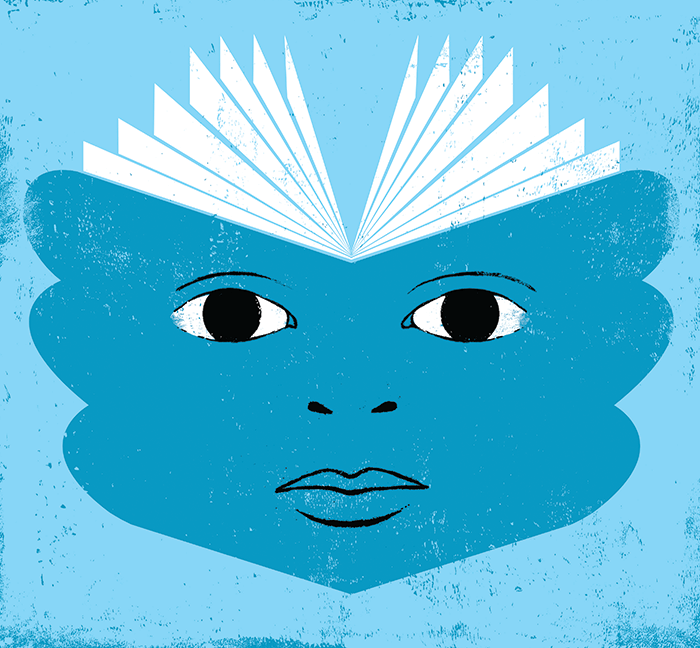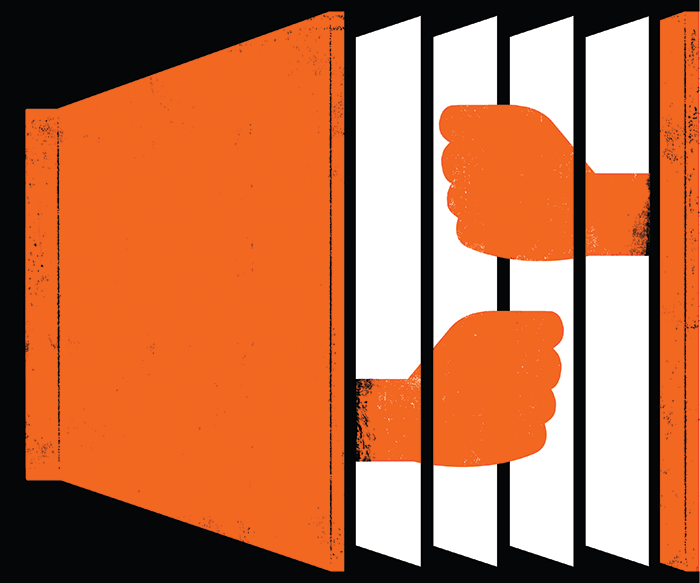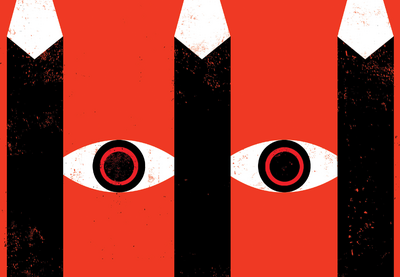Shortly before my son turned 15, he was expelled for the remainder of his ninth grade year, after already having served a two-week suspension for marijuana possession. What presented as poor judgment and youthful defiance masked a longer battle with pervasive depression and suicidal thoughts that would take another year to surface.
Yet, at every step of the way, the ninth grade administrator failed to follow through with promised interventions. It was easier to suspend and expel. During his expulsion hearing, I suggested he do more volunteer work and put forth a plan for counseling in addition to the two-week suspension he’d already served—pulling mainly from alternatives in the district’s student code of conduct.
Despite expulsion being optional for a first offense, the hearing officer decided it was the only way my son could learn his lesson. While I knew about the school-to-prison pipeline and racial disparities in school discipline, it was still shocking to watch it unfold.
Discipline Disparities and the Continuum of White Supremacy and Slavery
Leslie Jones, a senior staff attorney with the Southern Poverty Law Center’s (SPLC) Criminal Justice Reform practice group, sees a throughline from slavery to current approaches to school discipline. Jones said that the treatment of Black children and other children of color is by design, operating within a long history of systems that devalue the importance of investing in them.
“It was at one point illegal for Black and Brown children to even learn how to read,” Jones explains. “And now that we have made progress in some areas, it’s like we have to find other ways to exclude, other ways to marginalize.”
Attitudes toward Black children have been shaped in a society socialized to believe Black behavior requires punitive measures and control. Understanding how to address the ongoing disparities in student discipline requires a recognition of what Jones describes as “the continuum in the legacy of white supremacy and a continuing legacy of slavery.”
Part of breaking that continuum includes the work of groups like the Alliance for Educational Justice (AEJ), a coalition of intergenerational and youth-led organizations advocating for a holistic approach to school discipline.
Jonathan Stith, national director for the AEJ, recalls a young organizer who described schools as needing mood detectors instead of metal detectors.
“At the root of the vision is young people want to radically transform what safety looks like—what discipline looks like—to a more fair and equitable system that really has community and care at its heart versus incarceration, pushout and punishment,” Stith says.
Drawing the connection between the treatment of enslaved people and modern school discipline, Stith points to the book Educating for Insurgency: The Roles of Young People in Schools of Poverty by Jay Gillen, a Baltimore-based educator and facilitator with the Baltimore Algebra Project.
“Look at the age range of runaway Africans and the connection between police and slave patrols,” Stith says. “Historically, Black youth running away, being chased by slave patrols—the same slave patrols now follow young people into schools.”
According to Gillen’s research, an estimated 75% of enslaved people who ran away were between the ages of 13 and 29. He draws a comparison between students in impoverished schools and enslaved people challenging parallel systems of political control.
Pulling on his own decades of experience, Gillen writes that “well-run schools, like well-run plantations, are places where the ‘consequences’ for violating requirements are swift and certain.”
In the school setting, this translates to an emphasis on domination and control, which disproportionately is focused on the actions of Black children and teens.

The “Pathology of Punishment and Control”
The fear and systemic devaluation of Black people, originating during slavery, has carried through to subsequent interactions and systems, including school discipline.
Nearly 10 years after the U.S. Department of Education first released data on school-based arrests and law enforcement referrals, there’s no doubt that Black students are being exposed to undue harm. Example after example abounds.
In 2015, viral videos showed a school resource officer throw and drag a South Carolina high school student out of her math classroom for “being disruptive.” A classmate, Niya Kenny, was later arrested for encouraging other classmates to record the violent encounter and yelling at the officer to stop. The teacher had called the officer because the first student allegedly had refused to hand in her cell phone. Kenny was arrested for “disturbing a school.”
An October 2021 report from Education Week found that Black children and teens comprised about 75% of the disorderly conduct referrals across South Carolina between August 3, 2015, and July 30, 2020.
Disorderly conduct charges and even corporal punishment persist with large disparities between Black children and their white counterparts. As documented by the 2019 SPLC report The Striking Outlier, a range of negative consequences can result from corporal punishment, including physical injury, increased absenteeism, behavioral and mental health challenges, and damaged relationships.
A study published in the journal Social Problems in 2021 found a possible correlation between a school’s disproportionate use of corporal punishment on Black students and the United States’ history of racial terror: This practice is more likely to occur in counties with histories of lynching. And it does not correspond to Black students’ behavior.
“We know that Black students are no more likely to ‘misbehave’ than their white peers,” says Tyler Whittenberg, deputy director of Opportunity to Learn at the Advancement Project. “But they are more likely to be suspended, arrested and referred to law enforcement.”
Whittenberg says the difference in treatment experienced by Black students is directly tied to the legacy of Jim Crow and slavery.
“It starts with this idea that Black students in particular need to be controlled and dominated; otherwise, they will not act right.”
He describes a “pathology of punishment and control,” subjugating youth to a system that will prepare them to enter the criminal justice system either as juveniles or as adults. Interacting with police in schools increases those possibilities.
A collaboration among several groups, including the Advancement Project and the Alliance for Educational Justice, the report We Came to Learn: A Call to Action for Police-Free Schools outlines the history of police in schools and contextualizes the disparate treatment for students who do not have access to supportive services or staff like social workers or school counselors. An estimated 1.6 million students attend schools with police officers but no counselors.
As highlighted by the report, police presence in schools coincides with early efforts at school integration ramping up during the civil rights era. In many ways, policing in schools has followed a similar approach to policing Black neighborhoods. Broken windows policing inspired broken windows discipline.
The situation becomes even more daunting when school districts collect sensitive student information and share it with local law enforcement for the purpose of tracking instead of helping students. Bacardi Jackson, interim deputy legal director for the Children’s Rights practice group at the SPLC, gave the example of a program utilized by the Pasco County School District in Florida.
According to Jackson, it was discovered that the school district shared sensitive student information with law enforcement, which in turn created a secret list to track hundreds of children and their families. In spring 2021, the PASCO Coalition—dedicated to ending this practice—demanded the school district discontinue its “data sharing” agreement and participation in this predictive policing.
She describes this program and secret list as resembling a real-life Minority Report, referring to the movie in which police predict crimes and arrest people before the crimes happen.
Jackson says that, based on the information available in the database, it isn’t just tied to student behavior. In some instances, students are entered into this list based on grades or having to be institutionalized due to mental health issues—or even if they have witnessed domestic violence.
“They are being criminalized for those things that they may not have any control over or that suggest they need help,” Jackson says. “And instead, we are throwing police at them.”

Barriers to Changing Approaches in School Discipline
The belief that police keep schools safe is itself a barrier to reapproaching school discipline—even though that belief is not supported by evidence.
According to We Came to Learn, the presence of school police exploded between 1997 and 2013, more than doubling from 9,400 to 20,000. Since the Columbine shooting in 1999, responses to school shootings from all levels of government have led to increased funding for school-based police, putting an undue burden on Black and Brown students.
But adding more police to schools has unfortunately not kept students and staff safe; it has only contributed to further criminalizing marginalized groups.
In The Cost of School Policing, ACLU of Florida, in collaboration with several organizations, examines the impact of police in Florida schools after the passage of the 2018 Marjory Stoneman Douglas High School Public Safety Act. “The presence of law enforcement in schools was related to increases in the number of behavioral incidents reported to the state, the number of such incidents reported to law enforcement, and student arrests,” the report reads.
Another challenge teachers and administrators must deal with is personal bias, of which many of them may not even be aware. Jackson pointed to a 2016 Yale study of teachers that found teachers often focused on Black students generally and Black boys specifically when looking for bad behavior.
“It’s an unprecedented time,” Jackson says, “but we need the teachers to teach courage, and we need them to have courage because they are on the front lines of what is happening in a public education.”
Tackling implicit bias and other issues of equity has become even more challenging with recent attacks on progressive reforms in public schools. Under the guise of attacking a scholarly legal framework, critical race theory, school districts and state legislatures have begun adopting policies targeting efforts to address historic inequities in public education and the treatment of Black children.
We certainly need courage to turn the tide.
It was at one point illegal for Black and Brown children to even learn how to read. And now that we have made progress in some areas, it’s like we have to find other ways to exclude, other ways to marginalize.
— Leslie Jones
Embracing Disciplinary Alternatives
As much as we need courageous educators in this moment, alternative disciplinary approaches are readily available. A former eighth-grade social studies teacher, Whittenberg says Black students and other students of color deserve the same patience, empathy and innovation as their white counterparts on a consistent basis.
“There’s nothing in the literature that says exclusionary discipline, suspension and expulsion works to change behavior,” explains Whittenberg. “Yet, we continue to do the same practices.”
But educators don’t have to, and there are resources that can help teachers resolve issues in ways that address behaviors and positively affect child development.
In Learning for Justice’s “The Foundations of Restorative Justice,” experts tout practices such as restorative inquiry, restorative conferencing and restorative circles as less punitive ways to resolve conflicts in school—“a more communal, collaborative system of communication, expectation-setting and accountability.” But just as importantly, those experts hope educators first build communities of trust. A culturally sustaining space with authentic relationships, they say, is a necessary precursor to eradicating harmful discipline practices and the biases that fuel them.
Those authentic relationships must extend from the surrounding community to the classroom, experts say. At the community level, that may look like increasing authentic family engagement (through practices like home visits and more accessible communication) to build trust. At the classroom level, according to LFJ’s Reframing Classroom Management, that may look like learning to understand how behaviors signal needs; finding proactive strategies that help students feel classroom-ready and resilient; and creating spaces where students can make mistakes and learn from them.
Individual practices, however, cannot overcome deeply embedded policies with built-in biases. To the extent possible, teachers should support efforts to address inherently harmful systems.
“The first thing is that [we’ve] got to get rid of all of these systems,” Stith says. “We can’t just continue to overlay stuff on top of a system that actually really needs to be dismantled.”
Whittenberg sees the ideal situation as creating an educational environment that supports a liberatory framework that allows for children to be unapologetically Black while providing a high-quality education.
“You can’t have a space like that,” Whittenberg says, “if you are being heavy-handed with discipline to the point of trying to alter one’s creativity, alter one’s self-expression and not allow the child to be vulnerable, get creative and explore their own boundaries.”
Creating space for Black children and young adults to feel supported and free to explore possibilities leads to brighter opportunities. Treating Black children, like my son, with compassion and care gives them tools to build for the future. It is past time we end the remnants of slavery and approaches to Black children that treat them like a problem to be controlled instead of people to nurture.
